How to Care for Snake Plant Indoors and Outdoors
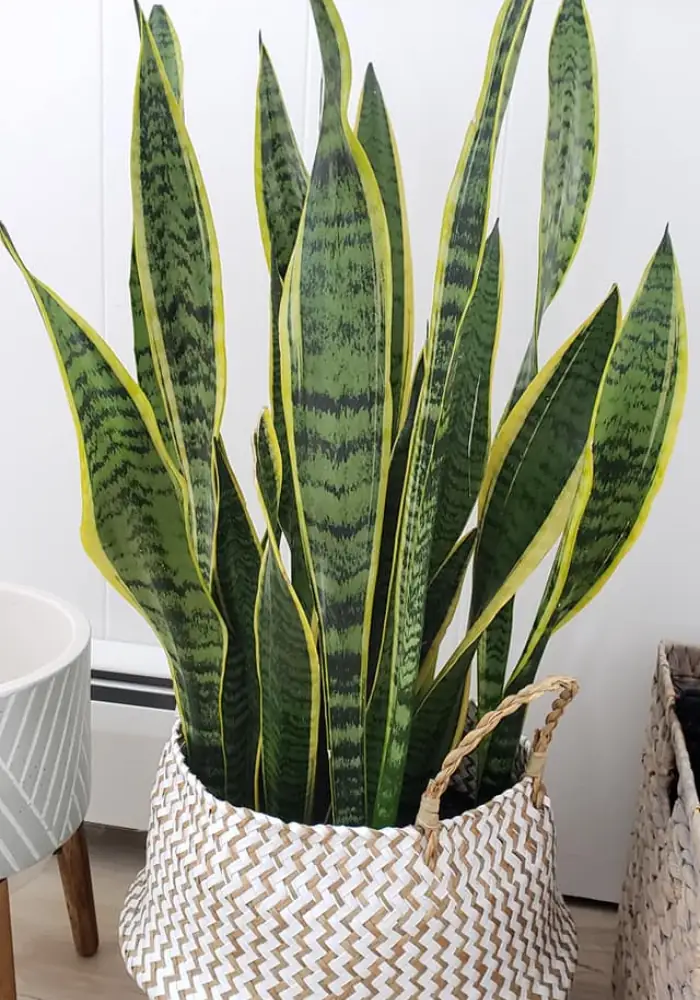
The snake plant (Dracaena trifasciata), often known as mother-in-law’s tongue, is an ideal home decorative plant due to its sword-like leaf pattern. The plant is one of the most effective air-purifying plants.
The plant is great for beginners looking for an easy-to-grow houseplant. Here’s what you need to know about caring for your snake plant indoors and outdoors.
| Scientific name | Dracaena trifasciata |
| Sunlight requirement | Bright indirect light |
| Water | Water once every 2 weeks |
| Soil pH | 6.5 to 7.5 |
| Humidity | About 40% |
| Temperature | 55 to 85°F |
| Soil type | Light loamy soil with excellent drainage |
| USDA zones | Zones 9 – 11 |
| Propagation | Cuttings or division |
| Positioning | North-facing window |
| Size | 8 to 12 feet tall |
Care requirements for snake plant
The snake plant is one of the easiest houseplants to maintain. It can thrive well indoors in a room with plenty of natural light. Ensure you keep it free from extreme heat and cold for it to thrive.
The following are care instructions for snake plants:
Water requirements
Snake plants prefer to be watered once every two weeks. Allow the soil to dry out between waterings except during winter, when the plant needs to be watered just once a month to keep the soil moist.
CAUTION: Overwatering can cause the base and the roots of sansevieria to rot, while underwatering will cause wrinkling and curling foliage.
- Do not water frequently. Water only when the topsoil feels dry.
- Water from the bottom to encourage root development.
- Preferably use rainwater or distilled water for watering.
Pro tip: Instead of relying on how the soil surface feels, insert your finger a few inches into the soil to determine if it needs water. If you feel any moisture or soil stick on your finger, delay watering for a few days.
Sunlight requirements
Snake plants prefer bright indirect sunlight but can grow in dark spots indoors, though at a slower rate. The plant requires at least 5 hours of indirect sunlight to thrive. Therefore, place the plant near a north-facing window if you’re growing it indoors.
Although snake plants can withstand direct sunlight, they’re likely to suffer damage from sunburn.
On the other hand, the plant will develop droopy and sad-looking leaves when it is not getting enough sunlight.
Pro tip: Avoid suddenly relocating your plant from low light to direct sunlight; otherwise, its leaves will turn yellow or brown depending on the stress level.
Humidity
Snake plants require 40% humidity to thrive. Leaves will become wet in high humidity levels, resulting in brown spots and perhaps a fungus infection. The leaves will turn yellow with brown edges if the humidity is too low.
Use a humidifier or a dehumidifier near your snake plants to maintain proper atmospheric moisture. Alternatively, place a pebble tray with water near the plant to maintain a humid environment around it. You can also mist your snake plant 1-2 times a day during summer.
Soil type and pH
Snake plants will flourish in loose, well-drained soil that allows constant water flow. Use peat moss, coconut coir, perlite, and garden soil to prepare a potting mix for your snake plants. I advise using light loamy soil with more sand than clay to improve drainage.
Keep the soil pH between 6.5 to 7.5.
Temperature
The ideal temperature for snake plants is between 55 and 85°F when growing indoors. Snake plants prefer warm surroundings; when the temperature falls below 50°F, the leaves curl and become white and mushy. Extremely high temperatures will dry out the leaves, making them susceptible to cracking.
Winter care tips
Snake Plants can’t endure the cold for very long, but if you keep them inside, they can make it through winter. Here are some winter care tips for your snake plant.
- Move your plant away from drafty windows and ventilators.
- Do not overwater the plant.
- Strictly do not fertilize at any chance.
- Keep their temperature stable and avoid wide fluctuations.
- Maintain the average humidity around the plant.
Blooming
Snake plants bloom during spring, producing small white flowers on tall stalks. The occurrence is rare and only happens to those plants grown outdoors all year round. Blooming happens only once a year.
Increasing sun exposure will make your snake plants grow faster and more likely to produce flowers. These plants grow slowly in low light conditions and require extended periods of sun exposure to thrive.
Pro tip: Not all snake plant varieties bloom. To make your snake plant bloom, move it where it will receive plenty of brilliant indirect sunlight. Be cautious not to damage the leaves due to sunburn.
Common issues
Despite the snake plant being a hardy plant that requires little care and attention to flourish, it has some common problems.
Here are some common snake plant issues, as well as what they mean and how to solve them:
- Root rot: Oversaturation of the roots with water is the main cause of root rot in snake plants. Signs of root rot in snake plants include smelly potting soil, mushy roots, and yellow-brown leaves. If these signs show up, remove the mushy roots, then repot your plant using fresh soil.
- Wrinkled leaves: The wrinkling of snake plants indicates exposure to excessive heat, high temperatures, or scorching sunlight. If the leaves of your plant are wrinkled, move it into indirect bright light and water the soil to allow the leaves to heal. Also, maintain the temperature between 55 and 85°F.
- Brown tips: Snake plants can develop brown tips when exposed to excess heat, sunlight, and excessive fertilizer application. Ensure your plant receives the correct amounts of sunlight and fertilizer to avoid brown spots. Here’s more on treating snake plant’s brown tips.
- Leaves yellowing: Yellowing foliage is caused primarily by overwatering, slow-draining soil, and high temperatures. Cut the affected yellow leaves to fix yellow snake plant leaves, then repot the plant in fast-draining soil. Afterward, make sure you water your plant correctly. Read more on why your snake plant is turning yellow.
FAQ
What is the best pot for snake plants indoors and outdoors?
The best pots to plant your snake plants are terra cotta pots. The pot’s porous nature allows air and water to move through the walls freely, preventing soil disease and root rot. Terra cotta pots are suitable for both indoor and outdoor container gardening.
Do snake plants need fertilizer?
The snake plant doesn’t require much fertilization, but fertilizing it during the growing season will significantly encourage its growth. For indoors, you can use any all-purpose fertilizer, but avoid fertilizers incredibly high in nitrogen, as this can result in weak, floppy new growth. Fertilize your snake plant, preferably twice annually.
Where should I position my snake plant?
Place your snake plant near a North-facing window where it will receive bright indirect sunlight. Ensure the location is warm; otherwise, move it away from cold drafts.


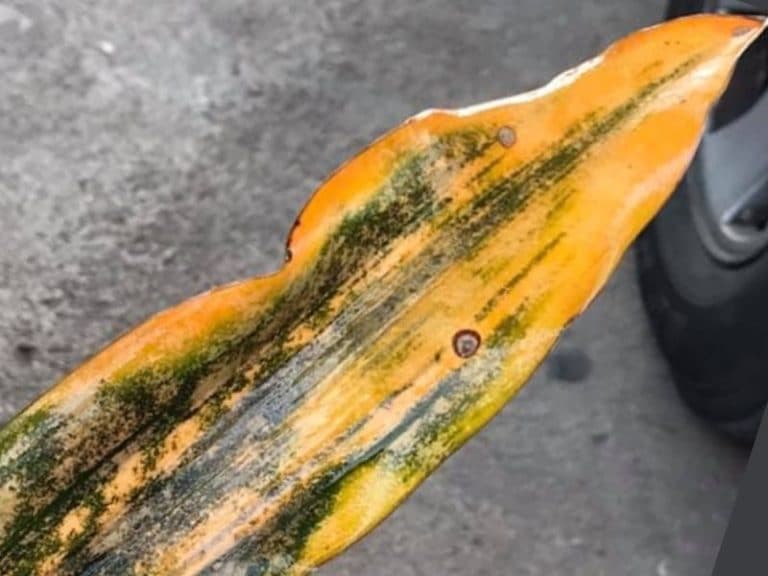
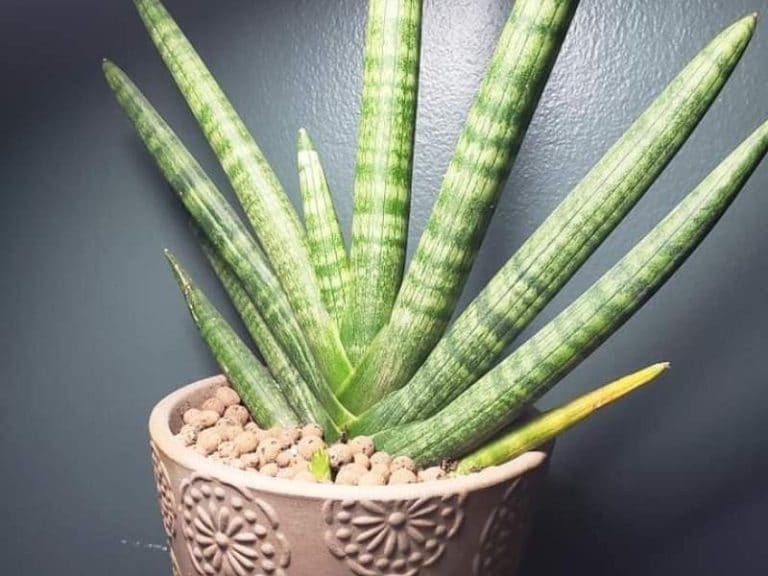
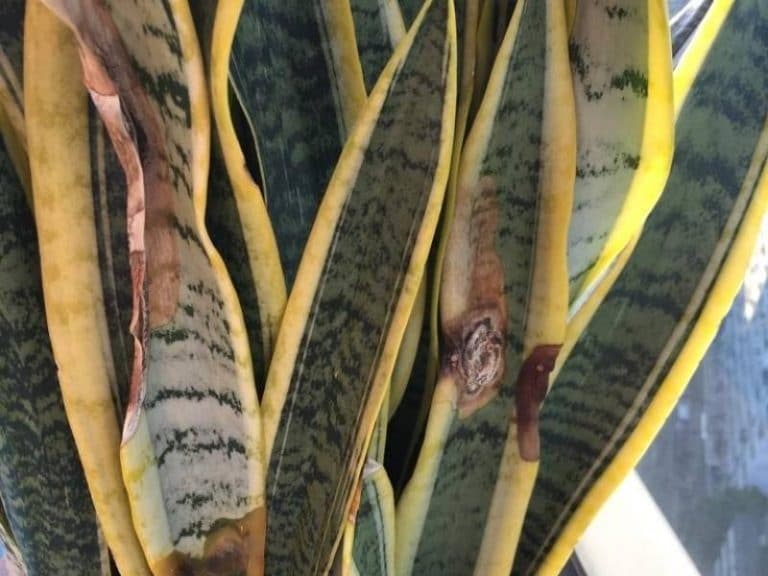

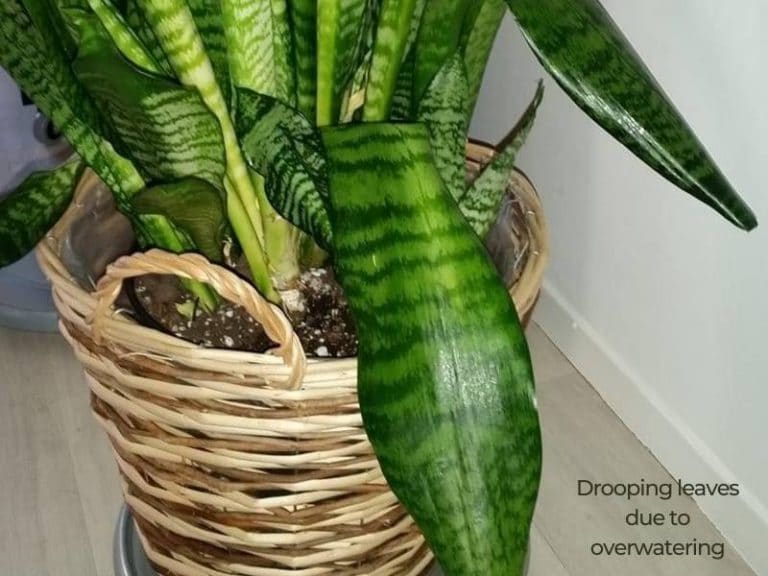

Informative article but wanted to find information on when to repot my snake plant or do the prefer to be root bound.